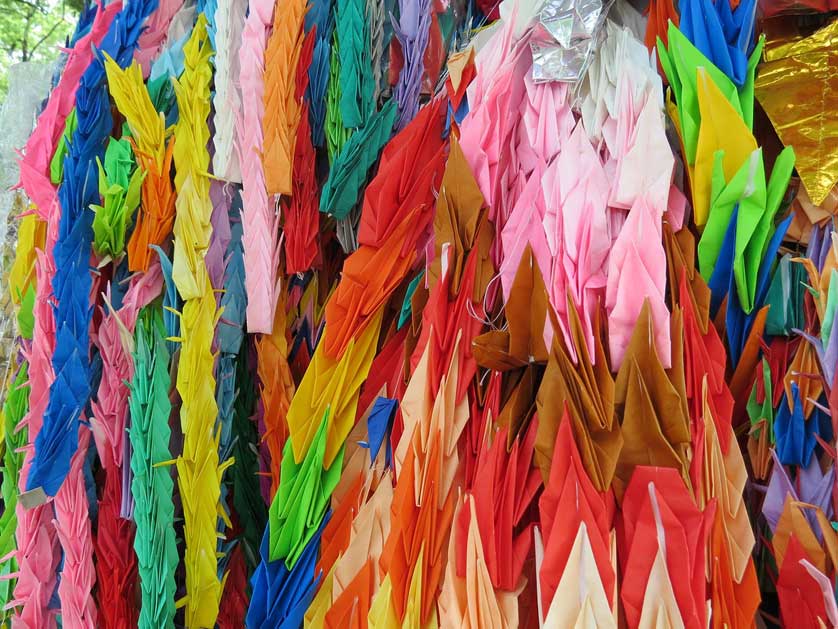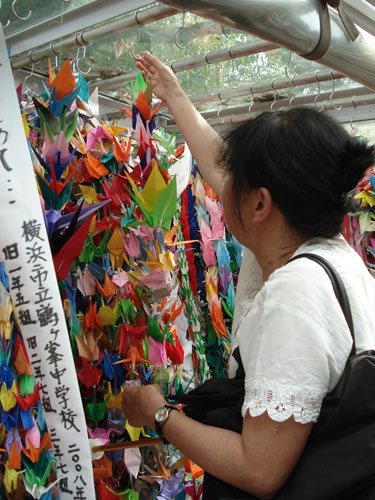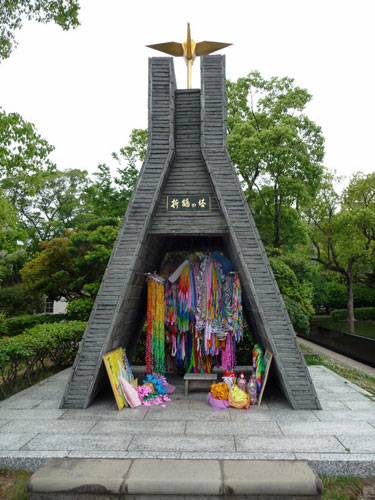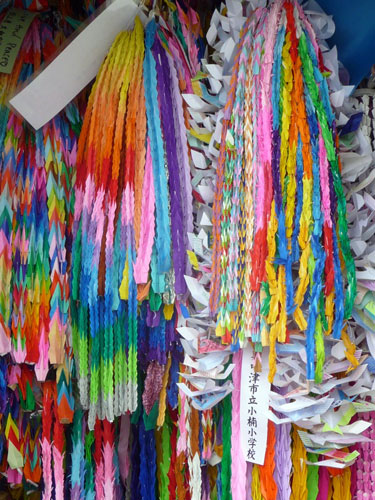Senbazuru: The Japanese art of folding 1,000 origami cranes
Senbazuru, which translates to "1,000 cranes" in Japanese, is a longstanding tradition of folding one thousand origami paper cranes. In Japanese culture, the crane symbolizes longevity, happiness, and good fortune. Folding a thousand cranes is often undertaken as a prayer for someone who is ill to recover, or as a wish for personal happiness and good luck. The most well-known story associated with senbazuru is that of Sadako Sasaki, a young girl who developed leukemia as a result of radiation exposure from the atomic bombing of Hiroshima.
The symbolism and cultural significance of cranes in Japan
In Japan, cranes have long been revered as mystical and auspicious creatures. They are believed to live for a thousand years, making them symbols of longevity and good fortune. In art and folklore, cranes are often depicted alongside pine trees, another emblem of long life. The crane's graceful appearance and lifelong pair bonding also make it a representation of loyalty, fidelity and marital harmony. Cranes frequently adorn wedding kimonos and other ceremonial garments and objects. Beyond weddings, the crane motif can be found in many aspects of Japanese culture, from sake labels to family crests to traditional paintings.
In the wild, the Red-crowned Crane is the main species found in Japan, primarily in the marshes of Hokkaido. While its range has contracted due to habitat loss, the crane remains a potent and instantly-recognizable symbol throughout the country. Observing the elegant cranes in their natural habitat as they engage in pair-bonding dances is an unforgettable wildlife experience sought out by many.
The origins and history of the senbazuru tradition
The practice of folding a thousand cranes is said to have originated in the Edo period (1603-1868). The first known written instructions for how to fold a thousand origami cranes appeared in a book called Hiden Senbazuru Orikata(The Secret to Folding a Thousand Cranes) published in 1797. However, the act of folding a thousand cranes is believed to have already been an established custom at this point.
Initially, folding a thousand cranes was an endeavor undertaken to wish for a long life for oneself or a loved one. Over time, the tradition has evolved to be associated with wishing for recovery from illness or injury, for happiness and good luck in marriage, for success in one's pursuits, or for world peace. Folding a thousand origami cranes requires patience, dedication and meditative focus, lending the practice a spiritual element as well. Today, senbazuru created for specific wishes or occasions are often given as a heartfelt, meaningful gift.

Senbazuru One Thousand Cranes
How to fold an origami crane step-by-step
Folding an origami crane may seem daunting at first, but with practice it can be mastered by people of all ages. The basic steps are:
- Start with a square sheet of origami paper, colored side down.
- Fold the sheet exactly in half vertically, crease, then unfold.
- Fold the sheet in half horizontally, crease, then unfold.
- Fold the sheet in half diagonally both ways, crease, then unfold.
- Lift the top edge to the center crease, forming a small triangle. Flatten.
- Lift the bottom point of this triangle to the top point and flatten, forming a square.
- Lift the left and right points of the square to the center and flatten.
- Lift the top triangle over the center to the bottom, and flatten. Turn over. Repeat folds 5-8 on the other side.
- Lift uppermost layer on the left, pulling top point down as you press the side in. Flatten. Repeat on right. Repeat on the other side.
- Lift uppermost layer on the left, pulling top point out and down. Crease and flatten to form the head. Repeat on right to form tail.
- Pull out the wings on either side, and your origami crane is complete!

The story of Sadako Sasaki and how she popularized senbazuru worldwide
The story of Sadako Sasaki is perhaps the most famous example of senbazuru. Sadako was a young girl living in Hiroshima when the atomic bomb was dropped in 1945. Though she survived the blast, at age 11 she was diagnosed with leukemia caused by radiation exposure. While in the hospital, Sadako's friend told her about the senbazuru legend. Sadako set out to fold 1,000 cranes, hoping to be granted her wish to recover.
According to a popular version of her story, Sadako only managed to fold 644 cranes before she became too weak and passed away. Her classmates then folded the remaining 356 cranes so she could be buried with a complete senbazuru. However, Sadako's family says she exceeded her goal and folded around 1,400 cranes. Sadako's story spread around Japan and the world, inspiring many others to fold cranes in her memory. Her story made the origami crane an international symbol of peace and hope during challenging times. A statue of Sadako holding a golden origami crane stands in Hiroshima Peace Park, and thousands of senbazuru are offered there each year.
Where to see impressive displays of senbazuru in Japan
Many temples and shrines throughout Japan house displays of thousands of origami cranes, often draped from the ceiling or adorning special structures. The Hiroshima Peace Memorial Museum has a permanent exhibition of Sadako's cranes and senbazuru donated in her memory. The iconic Peace Memorial in Hiroshima is draped in colorful chains of a thousand cranes, a stirring sight.
At Nikko's famous Toshogu Shrine, a beautiful display of origami cranes decorates the sacred stable. In Tokyo, the Yasukuni Shrine often exhibits large numbers of senbazuru. Displays of a thousand cranes can also be found at memorials, museums, in shopping malls and many other public spaces throughout the country, especially in August around the anniversaries of the atomic bombings and on Obon holiday.

The Nagasaki memorial is topped with a statue of a golden, folded crane
How people around the world have adopted the senbazuru practice
The senbazuru practice has spread globally, with people of all nationalities folding a thousand cranes for myriad reasons - as a symbol of support for disaster victims, a call for peace, to aid the recovery of a friend or relative, or in memory of a loved one. Students frequently fold senbazuru together as a team-building or fundraising project. The timeless symbolism of a thousand cranes resonates across cultures.
Senbazuru have been gifted to Japanese temples and memorials from foreign well-wishers as a gesture of friendship and unity. They are also commonly folded for cancer patients around the world. The meditative, hopeful act of folding a thousand cranes has brought comfort and purpose to many during health struggles. In the wake of the 2011 tsunami, senbazuru poured in from around the globe to the impacted areas as a show of solidarity. People often dedicate the act of folding a thousand cranes to a larger aspiration for world peace.
Other ways the crane motif is used in Japanese art and design
Beyond origami, the crane motif is ubiquitous in Japanese art and design. Crane imagery frequently adorns kimono fabric, ceramics, lacquerware, woodblock prints, paintings, stationary and more. The bird's distinctive red crown lends a striking pop of color. Cranes are a common subject for scroll paintings and ink wash artwork. They are also a favored symbol on family crests.
Stylized cranes may decorate everyday objects like chopsticks, teacups and hand towels. The crane is a popular emblem for brands, with the bird's silhouette gracing everything from sake bottles to airline logos to wedding hall signage. Combined with evergreen pines and the interior architecture of shrines and tea houses, cranes evoke an instant association with the serene, traditional beauty of Japan. Alongside the cherry blossom and the chrysanthemum, the crane endures as a universally recognizable icon of Japanese culture.









